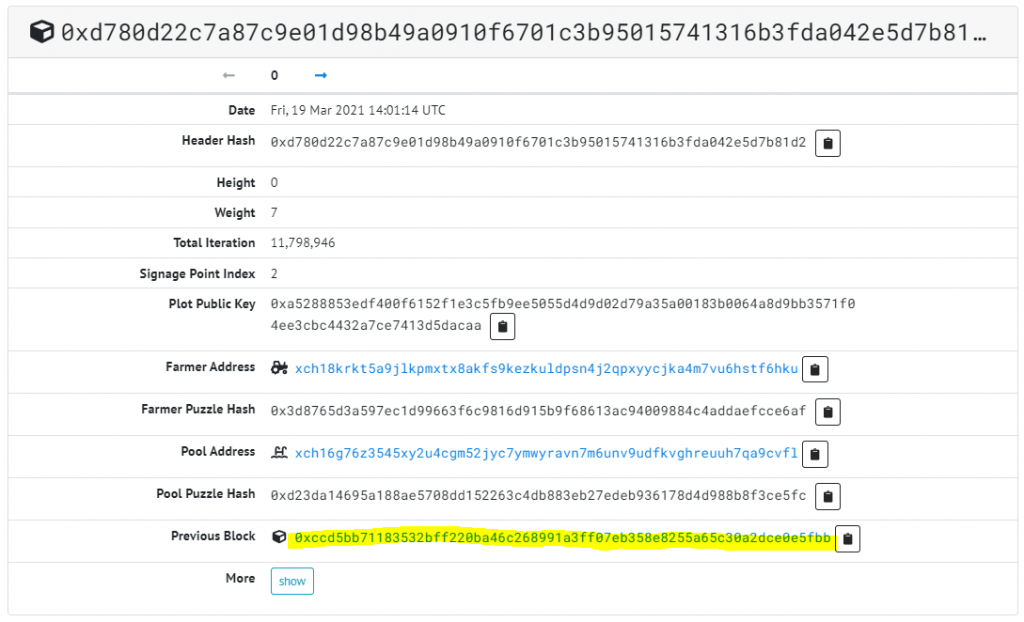There’s a lot of history and aspects to Chia that may be overlooked. Here’s a bit of Chia trivia. See how many of these you already knew and let me know what I missed.
#10 Netspace navigator
The term “netspace” referring to the amount of effective storage securing the Chia blockchain was named in reference to the popular browser from the 1990s, Netscape Navigator.
#9 Exponential netspace growth
In the first few months after mainnet launch, netspace was growing exponentially week over week. In just the month of May 2021, the netspace grew 10x from 1.5 EiB to 15 EiB, eventually peaking at 36.5 EiB in July 2021.
The profitability and hype at the time disrupted the global supply chain for storage and Chia was even called out by name during a Western Digital quarterly earnings call. Obviously unbounded growth would not be sustainable but it did not stop companies from naively incorporating it in their farming profitability models.
Had this exponential growth continued for a few more months, the Chia network would have taken up more storage than was available in the entire world.
2024/02/18 Update: @DanPerry_Chia provides some additional background about the serendipitous explosion in netspace growth at mainnet launch.
#8 Chia Lisp gets it pretty much right
One thing that limits Bitcoin’s programmability is its use of Bitcoin script. Bitcoin core developer Anthony Towns had written a post on the bitcoin-dev mailing list titled “bitcoin scripting and lisp” where he notes the benefits of Bitcoin adopting a new language modeled after Chia Lisp.
“After looking into it, I actually think chia lisp gets pretty much all the major design decisions pretty much right.”
Anthony Towns, Bitcoin Core
#7 Biggest block fees
For much of the life of Chia mainnet, there has not been substantial fee pressure until inscriptions came along. However, we occasionally see an inexplicably high fee on-chain, likely from an accidental typo. The highest block reward fee ever seen was 50.75 XCH. Imagine being the farmer that won one of these blocks:
| Block | Date | Fees |
| 2402557 | 2022-08-15 | 50.75 XCH |
| 2972303 | 2022-12-16 | 47.25 XCH |
| 3255686 | 2023-02-16 | 40 XCH |
| 1721285 | 2022-03-20 | 35 XCH |
| 2822150 | 2022-11-14 | 31.5 XCH |
#6 Smaller plot files were expected all along
Being able to reduce plot file sizes with what is known as “time-memory tradeoff” was anticipated from the very beginning. In fact, Chia even has example code posted several years before mainnet on how to do a “Hellman Attack” to reduce plot file sizes. What may not have been anticipated was the technique of bit-dropping that allowed for much more efficient compute/space trade offs. This technique wasn’t feasible until the advent of much faster plotting (GPUs) as a means to constructing the last part of a plot on the fly.
#5 A full node in Antarctica
Due to the low hardware requirements to run a full node, it is even possible to run one from even the most remote locations. It doesn’t always show up on the Chia globe view presumably due to intermittent Starlink connection and how peer discovery works, but Chia has been the only crypto with a full node in Antarctica.
#4 Oldest hardware to run full node
Speaking of low hardware requirements, the only thing you really need is a 64-bit computer. The oldest hardware to run a Chia full node is a 15+ year old Macbook. Let me know if you’ve successfully synced a full node on an even older system!
It even runs on a Steam Deck without breaking a sweat.
#3 Chia Network originally planned a mini-IPO
The Chia project started a number of years prior to mainnet in 2021, in fact it had originally planned to launch in 2019. Since the beginning, one thing that has remained consistent was Chia Network’s desire to have a fully compliant public offering, meaning an ICO was out of the question.
Instead, it had originally planned to work with the SEC to do a mini-IPO to raise up to $50 million from public investors. This would have been done through an auction process to determine a clearing price which would also determine the equity share sold.
However, mainnet launch was delayed until 2021 and just last year, Chia Network submitted a more traditional IPO draft registration with the SEC.
#2 Offer Files were not invented by Bram
Chia Offer Files are one of the key technologies that sets Chia apart from other project by enabling truly peer-to-peer commerce and can even serve as the building blocks for liquid markets of the future. However, despite what many believe (as evident from this poll), they were not invented by Bram, though he had a hand in it.

The actual story goes like this: Bram and Straya were working late one night in the Chia office. Straya was listening to Bram explain something (either singleton aggregation or atomic swaps) but in his sleepiness misheard what Bram actually said. In explaining back to Bram what he thought he heard, Straya described the fundamental designs of Offer Files.
Don’t take my word for it, hear Straya recount the experience in the Twitter Spaces linked below at time 1:27:20.
Honorable Mention: Cypherpunks at its root
Most people know that Chia was created by famous cypherpunk Bram Cohen, the inventor of BitTorrent. Not all may know about the background of the Chia Network CEO, Gene Hoffman.
Most famously, Gene helped end export controls on strong encryption by printing out the PGP source code as a book and shipping it overseas to be scanned back into code. Since exporting (strong) cryptographic software was considered a crime in the US at the time but the export of books would be protected by Freedom of Speech under the First Amendment (in theory). A couple years later, the US ended export controls on cryptography, paving the way for the basic privacy and security tools that are pervasive throughout the modern digital age, including cryptocurrency.

Gene recounts the specifics on his post “The History of Code is Free Speech“. For the rest of his many accolades, I’d refer you to his own bio.
Bram and Gene also both have direct connections to two leading candidates for the true identity of Satoshi Nakamoto, Bitcoin’s pseudonymous inventor. Bram was Len Sassaman’s former roommate while Gene was Hal Finney‘s former boss at PGP. Regardless of who the person(s) are behind Satoshi, there’s a high likelihood they ran in the same circles as Bram and Gene.
#1 Genesis block message
The first challenge on the chain, known as the Genesis Challenge, encodes a message from Bram Cohen.
"Operational error causes Fed payment system to crash" We stand on the shoulders of giants, now let's get farming!“
This message pays homage to a similar message Satoshi encoded in the genesis Bitcoin block: “The Times 03/Jan/2009 Chancellor on brink of second bailout for banks”
Bram’s message is in reference to the US Federal Reserve’s payment system going down in February 2021, a month before Chia’s mainnet launch. The “shoulders of giants” he references are Bitcoin Core developer Gregory Maxwell and others. And in Bram’s own words, “There’s more utility in giving credit to people who don’t have enough already.”
A preimage was constructed from concatenating a Bitcoin block hash at predetermined height 675317 with Bram’s message. This Bitcoin block was not mined until ~45 minutes prior to Chia’s mainnet launch, ensuring that the genesis challenge could not have been anticipated ahead of time. You can confirm this encoding yourself by taking the SHA256 hash of the resulting preimage:
bitcoin_hash:0000000000000000000942b19f16b83a316acfa31e067c0b766c4dda034dc37f,bram_message:"Operational error causes Fed payment system to crash" We stand on the shoulders of giants, now let's get farming!and see that it matches the genesis challenge hash:
ccd5bb71183532bff220ba46c268991a3ff07eb358e8255a65c30a2dce0e5fbb
Summary: Top 10 Chia Facts You May Not Know
How many of these did you know? Let me know in the comments!








[…] article “Top 10 Chia Facts You May Not Know” […]
[…] genesis block of the Chia blockchain began March 19, 2021. In the three years since, Chia has achieved many things that no other […]